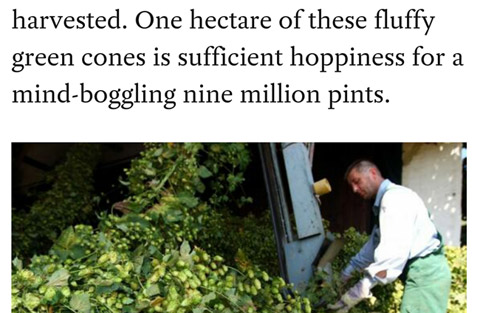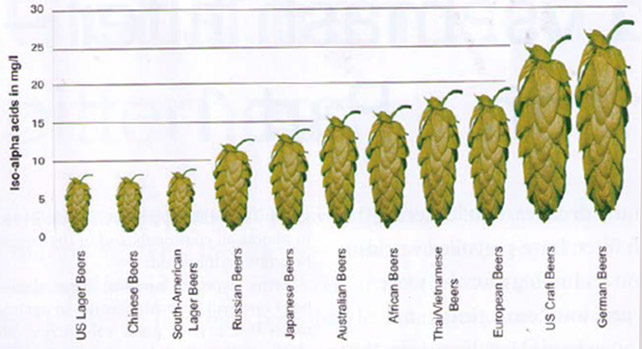
Reading this passage in “an alternative beer pilgrimage in Bavaria” I had to haul out my calculator (well, use the app on my phone), because nine million pints really does seem like a lot from one little patch of ground.
There are several moving parts, so I won’t share my math lest you can tell me what I did wrong. We are talking hectares (2.47 acres), metric tons (2,200 pounds), UK pints, hop varieties that yield different amounts per acre, and hop varieties with different percentages of alpha acids.
But it seems to me those would be nine million pretty un-hoppy pints. You’d definitely be at the left end of this chart showing the amount of iso-alpha acids if various beers (from Brauwelt, using numbers German hop broker Barth-Haas compiled about half a dozen years ago).

Certainly yield and alpha acids make a big difference. In the Hallertau region Herkules — an appropriately named hop if there ever was one — may yield twice as many tons per hectare as Mittelfrüh and contain four or more the amount of alpha acids. Most of Herkules is turned into hop extract and used to add bitterness (even if a tiny amount) in a very efficient manner.
And then there are American IPAs. They are made with different hop varieties, of course, whose yields generally fall between Herkules and Mittelfrüh. The percentage of alpha acids does as well, but that’s another dicussion.
Firestone Walker Union Jack IPA is brewed with four pounds of hops per barrel, and there are plenty of IPAs that use considerably more. Doing a little mixing and matching of yields I figure that it would take less than 220,000 pints of Union Jack to gobble up a hectare of fluffy green cones. That’s a lot less than nine million and, no matter how bad my math is, helps explain why we keep talking about the demand for more hops.